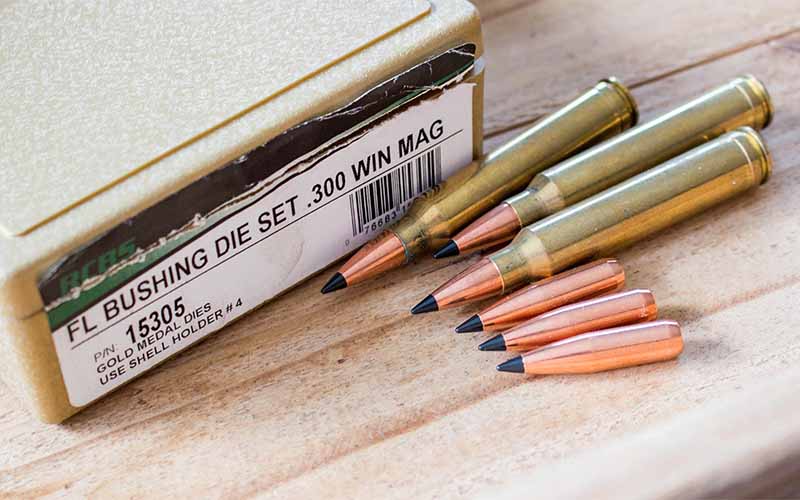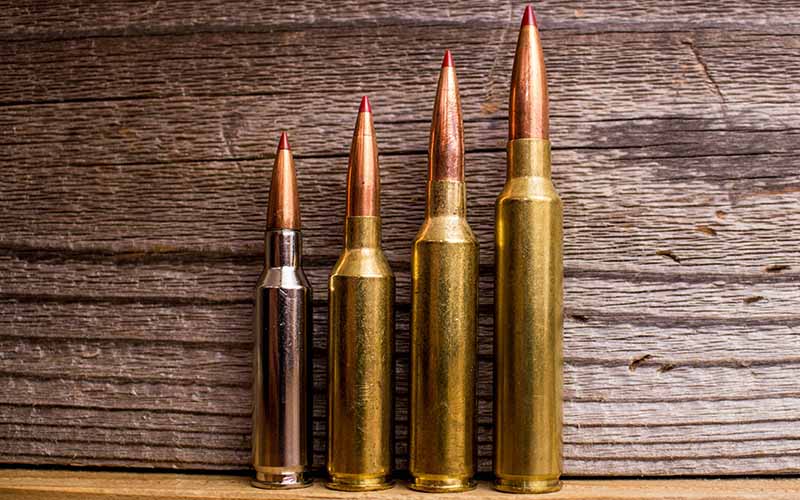A closer look at how seating depth affects rifle cartridge performance and what to know when reloading your own.
Each step in the process of reloading a metallic cartridge is important, from the proper sizing of the case, to seating your primer, to precisely weighing your powder charge.
Seating the bullet into the case is the culmination of the reloading process; a crimp may be applied afterward, but that’s optional in some instances and often a rarity among the cartridges designed for long-range shooting. And, make no bones about it: Our bullets are getting longer, the ogives are growing sleeker and the older round-nose bullets are becoming increasingly difficult to find.
My first handloads were designed to feed my then-new Ruger Model 77 MK II in .308 Winchester. Because my dad—dear Ol’ Grumpy Pants—had been shooting his .308 Winchester since he came out of boot camp in 1968, there was a pile of once-fired brass, and we sat down to pick a bullet for our new creations.
After some deliberating about cost, we settled on the 165-grain Hornady InterLock spitzer; that bullet came with a cannelure, and seating depth wasn’t much of an issue. Fast-forward a couple of years to my initial attempts to get the original Barnes X bullet to shoot, and seating depth became a major bone of contention. Looking back, none of my rifles printed any groups worth a damn with those bullets, but the effects of seating depth were shown, as the groups opened and tightened from minute-of-lemon to minute-of-cantaloupe.
Shortening Cases
The bullets of 30 years ago were certainly not the same as those available today; the dimensions of many of our classic cartridges will quickly show that they were designed to use bullets with shorter ogives, and therefore a lower ballistic coefficient. Oftentimes, it can be frustrating to try and mate an older cartridge design with a modern bullet and maintain a cartridge overall length that will still function in the magazine.
For example, the .350 Remington Magnum was designed to function in a short-action magazine, but using the shorter bullets of the 1960s. Try and fit a Nosler AccuBond in that case (whether the 200- or 225-grain) at a C.O.L. (cartridge overall length), which still fits in a short-action magazine, and the case mouth will be sitting on the bullet’s ogive and not on the shank.

The same situation can show up with a .300 Winchester Magnum and some of the longest bullets available, as the case was lengthened and the shoulder moved forward in comparison to Winchester’s other belted magnums, presumably in order to make room for more powder. While that goal was certainly achieved, it does compromise the amount of room left for the bullet outside of the case.
The Battle of C.O.L.
Many of the newest cartridge designs see a case shortened in order to leave enough room to utilize those really long projectiles, which possess the best ballistic coefficient values. The 6.5 Creedmoor, the 6.8 Western and the new 7mm PRC come quickly to mind. The 6.5 Creedmoor has climbed all over the .260 Remington in spite of the latter’s larger case capacity, because the Creedmoor can fit a better long-range bullet in the same magazine. The 6.8 Western is essentially a shortened version of the .270 WSM, but with a faster twist rate to utilize bullets usually too heavy for the .270 Winchester and .270 WSM to stabilize.
In order to load those long, heavy bullets in a short-action magazine, the case must be shortened. In both these instances, powder capacity is traded for the ability to use the highest B.C. bullets, as they will perform better than the cartridges with a larger capacity and a lower B.C. bullet.

Turning to Hornady’s new 7mm PRC, you’ve got a case designed to drive 175- and 180-grain bullets to velocities on par with the 7mm Remington Magnum, but the case geometry allows those long bullets to be seated so that the base of the shank of the bullet—where it transitions into the boat-tail—sits at the base of the case neck. This minimizes the amount of space eaten up by seating a long bullet deep into the case.
Now, I’ve had heated discussions with colleagues about the problems caused by seating a long bullet deep into the case—think about a .308 Winchester with a monometal 180-grain bullet—with some folks insisting that a bullet, which has a good portion of its length inside the case, can be bent upon ignition of the powder charge. That seems silly to me, and I’ve never seen any evidence of this phenomenon. Provided there’s enough neck tension, and there’s good chamber concentricity, I have absolutely no issue with a bullet extending into the case.
Generally speaking, when it comes to seating depth, there’s usually at least some room to play. The rule of thumb is that the farther out of the case you seat your bullet—resulting in a longer C.O.L.—the lower the pressure and the velocity will be; however, I have seen instances where the reverse proved to be true. Seating a bullet farther out of the case (keeping the same powder charge) will create a larger combustion chamber inside the case, lowering pressures.
Seat Safely
Sometimes, the reloader can take advantage of the additional space created by increasing the powder charge. What you definitely do not want to do is seat the bullet so far out as to have it resting against the lands of the rifling; this can cause dangerous pressure spikes.
SAAMI regulates the C.O.L. dimension for our cartridges, and those figures are usually what you see in your reloading manual. Some shooters skip the magazine restraint and choose to single-feed a cartridge with an overall length, which will not fit in a magazine yet is safe to load in the chamber. In fact, some bullet companies market single-feed projectiles: the Cutting Edge Bullets Lazer, for example.
Experimenting with seating depth can be a sound means of turning a good load into a great load. I’ve been developing a load for my 6.8 Western using the Badlands Precision 140-grain monometal Bulldozer 2 bullet. The 6.8 Western has a C.O.L. of 2.950 inches, but the magazine for my Browning rifle will handle cartridges measuring 3.010 inches, and those Bulldozer 2 bullets have an ogive sleek enough not to touch the lands. My initial load was seated at 3.000 inches, with groups printing 0.75 inch at 100 yards.

Seating the bullets slightly deeper—to the specified 2.95 inches—saw the groups tighten up to a consistent ½ inch. Coming full circle around the modern iterations of the Barnes X—the TSX, TTSX and LRX—I’ve found that these bullets tend to like a bit more jump, giving their best accuracy when seated at SAAMI spec … or even a bit deeper. This is just a general observation, as some rifles have shown a preference for the TSX to be seated long.
Reloading has been described as a loosely scientific means of juggling variables, and seating depth—like powder charge weight—is one of the easiest places to make an adjustment. Keep your caliper handy, record your seating depth for each bullet/cartridge combination, and do some experimenting to see if you can improve your group size.
Editor’s Note: This article originally appeared in the February 2023 issue of Gun Digest the Magazine.
More On Reloading:
 NEXT STEP: Download Your Free Storm Tactical Printable Target Pack
NEXT STEP: Download Your Free Storm Tactical Printable Target Pack
62 Printable MOA Targets with DOT Drills – Rifle Range in YARDS This impressive target pack from our friends at Storm Tactical contains 62 printable targets for rifle and handgun range use. Target grids and bullseye sizes are in MOA. Ideal for long-range shooting!
Subscribe to the Gun Digest email newsletter and we’ll send your print-at-home target pack right away. Just enter your email address below.

